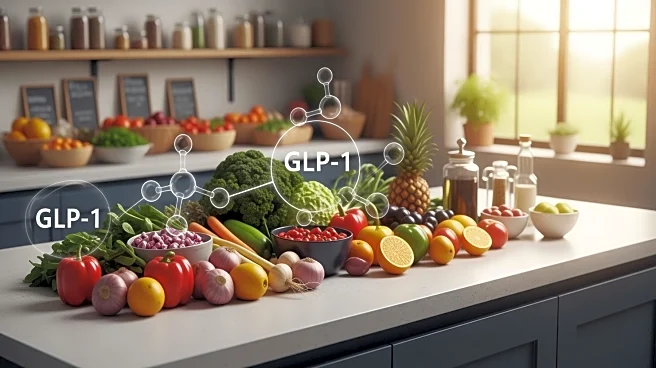What's Happening?
The GLP-1 food and beverage market has experienced significant growth, reaching a value of $53 billion with an annual growth rate of 17.46%. This expansion is driven by the increasing use of GLP-1 weight loss medications, with predictions indicating that
the number of global users will reach 40 million by 2029. Major food and beverage companies, including Nestlé, General Mills, and Conagra Brands, are launching GLP-1-friendly products to cater to this growing consumer base. These products range from ready meals to high-protein ice creams and nutrient-dense foods. However, the industry faces challenges such as regulatory scrutiny and the risk of negative associations with the drugs themselves.
Why It's Important?
The rise of GLP-1-friendly products represents a significant shift in the food and beverage industry, as companies adapt to changing consumer needs driven by health and wellness trends. This development could lead to increased innovation in product formulation, focusing on satiety and nutritional balance. However, the regulatory environment poses risks, as claims related to GLP-1 can attract scrutiny from authorities and consumers. Brands must navigate these challenges carefully to avoid potential backlash and maintain consumer trust. The success of these products could influence broader industry practices and consumer expectations regarding health-focused food options.
What's Next?
As the GLP-1 market continues to grow, food and beverage manufacturers are likely to further innovate and expand their product offerings. Companies may conduct market tests and refine their formulations to better meet consumer demands while ensuring compliance with regulatory standards. Additionally, the industry may see increased collaboration with healthcare providers to align product claims with medical advice. The ongoing scrutiny of GLP-1 drugs could impact marketing strategies, prompting brands to emphasize general health benefits rather than direct associations with the medications. The evolution of this market will depend on balancing innovation with regulatory compliance and consumer acceptance.
Beyond the Headlines
The GLP-1 boom highlights broader shifts in consumer attitudes towards health and wellness, potentially influencing long-term dietary habits and food industry standards. Ethical considerations may arise regarding the marketing of products linked to pharmaceutical interventions, necessitating transparent communication and responsible advertising practices. The focus on satiety and nutrient density could drive advancements in food science, leading to healthier options across various categories. As the market matures, companies will need to address the cultural implications of weight management and the role of food in supporting overall well-being.













